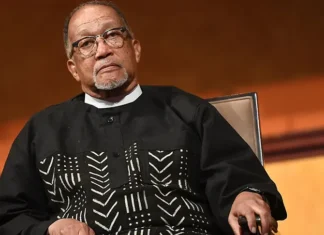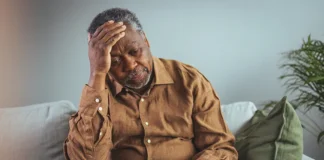
By Heather M. Butts, New York Amsterdam News
Tchaiko Parris, MD is a breast radiology specialist in Green Bay, Wisconsin with over 20 years of experience. She is affiliated with Bellin Memorial Hospital. Dr. Parris spoke with the AmNews about breast cancer and early detection especially as it relates to risk factors for Black women. This conversation has been edited and condensed for clarity.
AmNews: Please tell us about your work?
Tchaiko Parris: I’m a diagnostic and Interventional breast radiologist. I’ve been on my own essentially since 2011 after completing a fellowship. I am in Green Bay, Wisconsin. Prior to coming here, I was in California and I was the Medical Director of Breastlink Women’s Imaging Temecula Valley/RadNet Temecula Valley. Before that [I was] in Pennsylvania at the Guthrie Clinic Hospital. I’m a big advocate for women’s health [and] women’s education. I believe that [people] can make the correct decisions [regarding] how to manage your body as long as we’re given the information, so I always like to empower women and talk to them about their breast health and if they have other questions . . . [then I say go talk to] your doctor.
AmNews: Could you talk about why the rates of breast cancer mortality are so much higher for black women?
Parris: When it comes to breast cancer in black females, it’s complex and multifactorial on so many different levels. No one has come up with a clear-cut answer. Black women have more than 40% increased mortality rate than white women so although the incidence for developing breast cancer is about the same or slightly less than white women, [Black women] have a higher mortality rate and there’s research out there trying to address it.
You look at the disparities [and] whether secondary to healthcare issues, patients lack of insurance, lower income individuals that may not have the means … to get somewhere, to go get a screening, or they may not be able to take off from work [and] lose that income for that day-time period, whatever it is to go take care of their breast health, so they kind of put it aside. If I’m not feeling anything, if I’m not having any symptoms or pain, why go in and pay for this exam. One of the things that you have to do is to educate [individuals] because the more you educate them they’ll understand that this is a preventative tool. By screening you’re able to catch things early and … have a better outcome.
Related: Protecting future generations: The essential role of HPV vaccination in cancer prevention
Young black females, so less than the age of 50, they even have a higher mortality rate than young white females who are in that same age category who are diagnosed with them. Young females come in with these aggressive tumors and these aggressive tumors [such as] triple negative … and they may not think that something is going on with their breast because you know … I’m young, how am I supposed to have breast cancer … it does not run in my family … no one in my family that I know of has breast cancer so why would I have it … by time they come in, it may be something that is at a later stage so now you’ve have lymphatic involvement or you may end up now with metastatic disease.
AmNews: Could you talk about long-term cancer screening programs?
Parris: My thoughts are that we need more. It starts with primary care because we are a sub-specialty. You [must] have the primary care doctors be the advocate. The primary care doctor can … send these patients to the appropriate programs that they need. Now let’s say a patient shows up at my imaging facility. She is 45 so she’s over 40, she’s doing her screening mammogram and she checks off that she has a mother and a maternal aunt who were all diagnosed with breast cancer. Well, based on the age of that patient we recommend them to go into our high-risk clinic. When they go into the high-risk clinic what is done by the geneticist or the counselor is blood work to check for genetic mutations.
A risk assessment … is something that the American Cancer Society and American College of Radiology advocate for. At 30, all females especially African-American females should have a risk assessment done where you go in and you give as much information about your family history as you can because then what we do is we calculate something called the Tyrer-Cuzick Risk Assessment or IBIS Risk Assessment and if that score is over 20% then that means that this patient has an increased lifetime risk of breast cancer. Now that patient gets additional screening so she comes in on January 1 for her screening mammogram and it’s negative. Six months later she’s going to have an MRI because the MRI is a vascular based imaging study. It picks up cancers that are much smaller that might be more aggressive at an earlier time point before she comes back later six months for her screening mammogram. What the research [shows] is that if you use vascular based imaging studies such as a breast MRI or contrast enhanced mammography, those are the two imaging studies that you’d like to utilize so in most high-risk clinics that’s what’s being done now.
AmNews: What final things would you like to tell our readers?
Parris: One of the key things that we have to stress is that there is no end date when a woman should stop having her mammogram. That’s one thing we must stress because we have a lot of elderly coming in … they used to have their mammogram every year and then they got to 74 or 75 and they say my doctor said I don’t need it anymore. The whole idea is that if you don’t have a comorbidity that will lead to a decrease in your life expectancy then you should continue to have an annual mammogram.
Visit www.health.ny.gov/diseases/cancer/services or call 1-866-442-CANCER to find out more about free cancer screenings.
This post appeared first on New York Amsterdam News.













